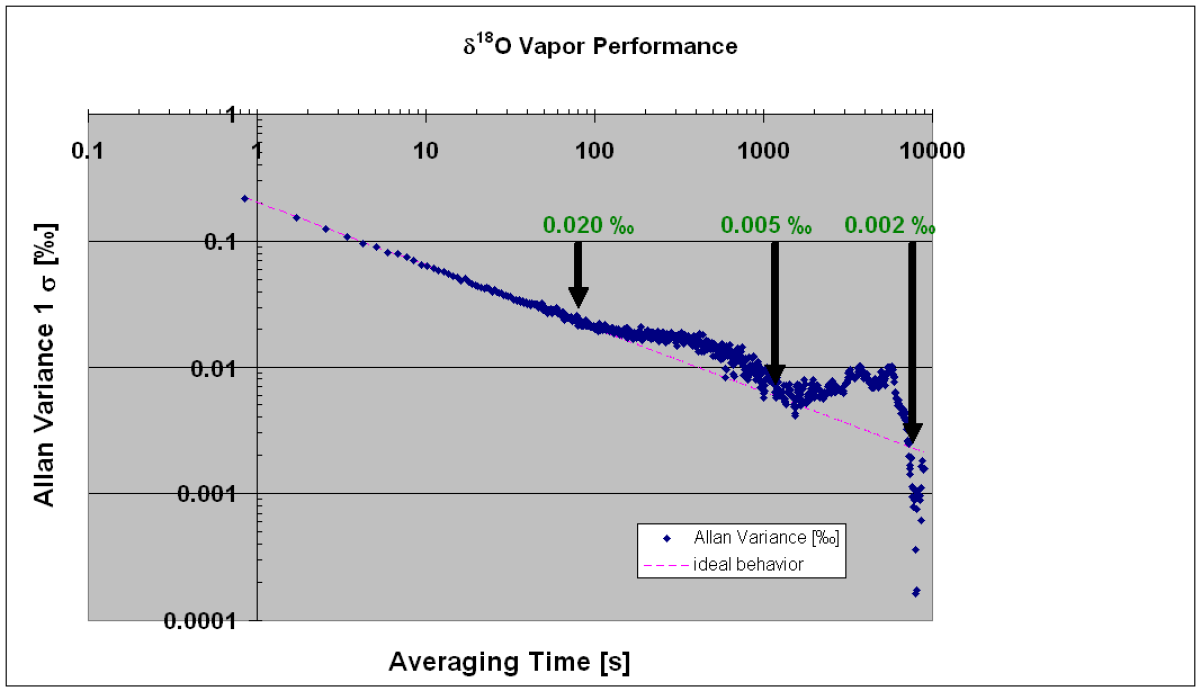When I joined Picarro at the start of September in 2009, Cavity Ring-Down Spectroscopy technology for isotope analysis had only just been created. In short order CRDS was validated by researchers whose laboratories specialized in using isotope ratio mass spectrometers (IRMS), devices which were previously considered the state of the art. These were also quite large and lab bound systems. The first generation of CRDS isotope analyzers were comparable in precision to lower-end IRMS systems but with significantly less upfront costs and lesser lifetime operational costs due to the overall ease of use and simplified sample analysis enjoyed by Picarro CRDS instruments.
The commercial success of water isotope analyzers, requests from customers to push the technology further, and reinvestment of revenue in R&D gives us at Picarro goals and the means to get there. This being the Silicon Valley, it also means a lot of engineers and scientists working long hours in the lab trying to accomplish the supposedly impossible. After 15 years in scientific instrumentation I thought I had seen every kind of improvement to analytical instruments but the results of our most recent efforts were quite amazing (see Robert Panetta’s blog for the exact word).
The latest addition to the water isotope analyzer family, the L2130-i, literally blows away IRMS in terms of precision, dynamic range, and versatility. Although isotope ratios are already expressed as ratio multiplied by 1000 (hence the per mil notation), the L2130-i calls for moving the decimal even further. The precision level is so high that we internally characterize the analyzer to the per meg level (1 per meg = 0.001 per mil). The average precision of the first production run is 11 per meg for δ18O and 38 per meg for δD. This is nearly a full order of magnitude better than the typical IRMS lab results. More typical data can be found here.
For me, as a scientist, what’s incredibly exciting about this is the new possibilities for research the L2130-i presents. For example, take the area of deuterium excess, a well understood relationship defined as d= δD-8*δ18O that measure deviation from the Global Meteoric Water Line. (This multiplier of 8 makes good δ18O precision so very important). Deuterium excess ratios are commonly used to identify vapor source regions and reflect the specific source conditions during water vapor formation. So gaining precision in deuterium excess ratio measurements should yield more fine-grained insights into water vapor formation and behavior. That should translate into a far more powerful capabilty to trace the precise source of water vapor - a critical piece of information for understanding the past and present global water cycle.
What’s more, the deuterium excess ratio of the ice core records should have a strong dependence upon sea surface temperature. This will facilitate understanding of past ocean temperatures and drive understanding of the complex relationship between CO2 levels, ocean temperatures, and precipitation patterns. Getting to the level of precision required for such research just got a whole lot easier and quicker with this new analyzer. When analyzing constant vapor samples the new analyzer is typically reaching precision of 5 to 15 per meg for δ18O and 30-60 per meg for δD from Allan variance plots.
As you can probably tell these improvements are very exciting at both a technical and scientific level. What’s also really nice is that all the peripherals remain exactly the same as before and can be used interchangeably between the different models of water isotope analyzer. That should also free up some time to work on more of things on our customers’ wish list(s). Thanks for reading - Gregor.
